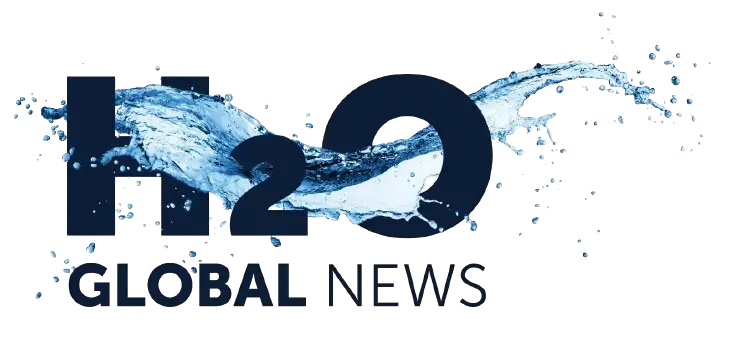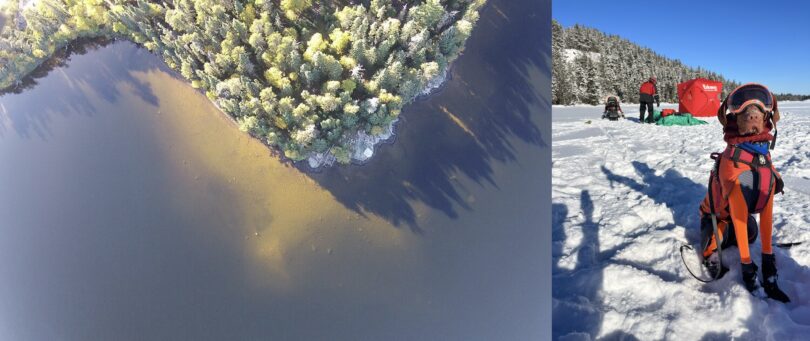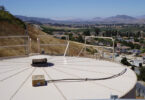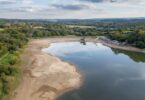At H2O Global News, we love dogs and make no excuses for including a story about one of our furry friends. Especially when she is doing a great job finding oil spills and keeping freshwater lakes pristine. Poppy, a beautiful Springer Spaniel working in Canada’s IISD Experimental Lakes Area, puts her nose to good use snuffling out oil hidden under ice. To find out more, we interviewed Sumeep Bath, who told us more about the role sniffer dogs can play in water quality.
Could you tell us about yourself?
I’m Sumeep Bath, and I’m lucky enough to be the communications manager for IISD Experimental Lakes Area, the world’s freshwater laboratory. Seriously, my science communication friends are a little jealous! I love this role because I can reach different audiences, whether I’m writing a serious policy brief or making a fun TikTok.
The best part? The place itself is incredibly photogenic, and the organization understands the value of communicating its work to the outside world.
What is the IISD Experimental Lakes Area?
IISD Experimental Lakes Area (IISD-ELA) is a one-of-a-kind natural laboratory. It’s made up of 58 pristine lakes and their watersheds in a remote area of northwestern Ontario, Canada, where they’re completely untouched by human activity.
This unique setting allows scientists to manipulate entire lakes to study how everything in the ecosystem—from the air to the fish—responds. Because these are real-world experiments, the findings are more accurate and reliable than research conducted in smaller, lab-based settings. This approach led to groundbreaking discoveries that have influenced billion-dollar decisions by governments and industries, shaping cost-effective policies and regulations to safeguard freshwater resources.
Why are oil spills such a problem and why are they difficult to detect?
An oil spill is the unintentional release of oil into the environment during transport via trucks, rail, or pipelines, which can contaminate freshwater ecosystems. In North America, one common type of oil transported is bitumen from the Alberta oil sands. Because bitumen is too thick to flow through pipelines, it’s diluted with lighter oils to create a mixture called diluted bitumen or “dilbit.”
Northern Canada is particularly vulnerable to oil spills, as pipelines and rail lines often cross frozen waterways. Spills in these remote, ice-covered areas are incredibly difficult and expensive to detect. Traditional methods require heavy machinery for drilling or underwater navigation, making the process time-consuming and challenging. Detecting these spills is vital to preventing devastating economic and ecological impacts.
How can sniffer dogs help?
Dogs have an incredible sense of smell, which is why they work in places like airports. A dog’s nose has up to 300 million scent receptors, while a human’s has only about six million. The part of a dog’s brain that processes smells is also 40 times bigger than ours.
Essentially, dogs “see” the world with their nose. That’s why using trained dogs to find oil spills is so effective—it’s a new application of a skill they’ve always had.
What are the advantages of using sniffer dogs?
Recent research at the IISD Experimental Lakes Area yielded excellent results: specially trained detection dogs successfully located two different types of oil under lake ice in a double-blind study. In all six trials, the dogs correctly identified the oil’s location with no false negatives.
This is a significant breakthrough. Current technologies for detecting oil under ice—such as ground-penetrating radar and remote or autonomous underwater vehicles—are slow and extremely expensive, with some systems costing up to $6 million plus daily operating fees of $30,000.
While canine detection has not yet proven effective in complex urban environments, this research highlights the growing potential for using dogs in environmental surveys.
How long did it take to train Poppy?
Poppy, a detection dog specializing in environmental surveys, was trained by Paul Bunker, a British Army veteran and founder of Chiron K9. With over 40 years of experience with working dogs, Bunker began training Poppy as a puppy after receiving her as a gift.
The training process is straightforward. A target scent—like oil, explosives, or even endangered species—is paired with a reward, such as a squeaky tennis ball or a treat. For Poppy, this makes the work feel like a game. When she successfully hunts down and finds the scent, she’s rewarded, reinforcing the desired behaviour.
Have you any plans to expand the programme?
A representative from the Wiikwemkoong First Nation on Manitoulin Island contacted us for help finding several undocumented and abandoned oil wells. Following the story, they reached out to see if our oil-sniffing dog team could assist. Our head scientist, Vince Palace, is currently in discussions to determine how our technology can help.
Perhaps the most important question: What is Poppy’s favourite treat?
For Poppy, her favourite squeaky tennis ball is the ultimate reward. It’s not just a treat; it’s the payoff for a job well done. When she successfully finds an oil spill, we celebrate her success together, and she gets to play with her ball, making the whole process a fun game.







